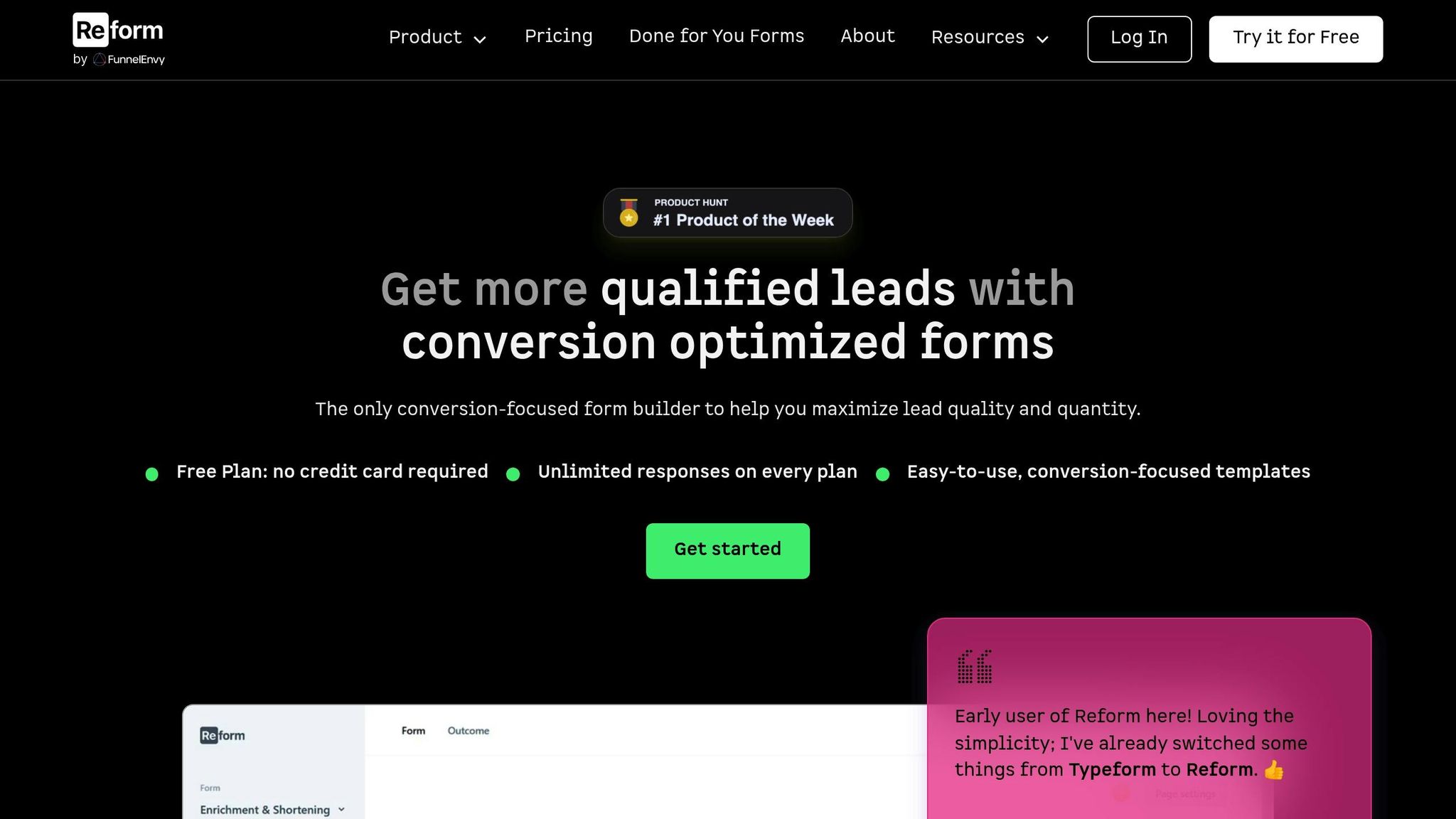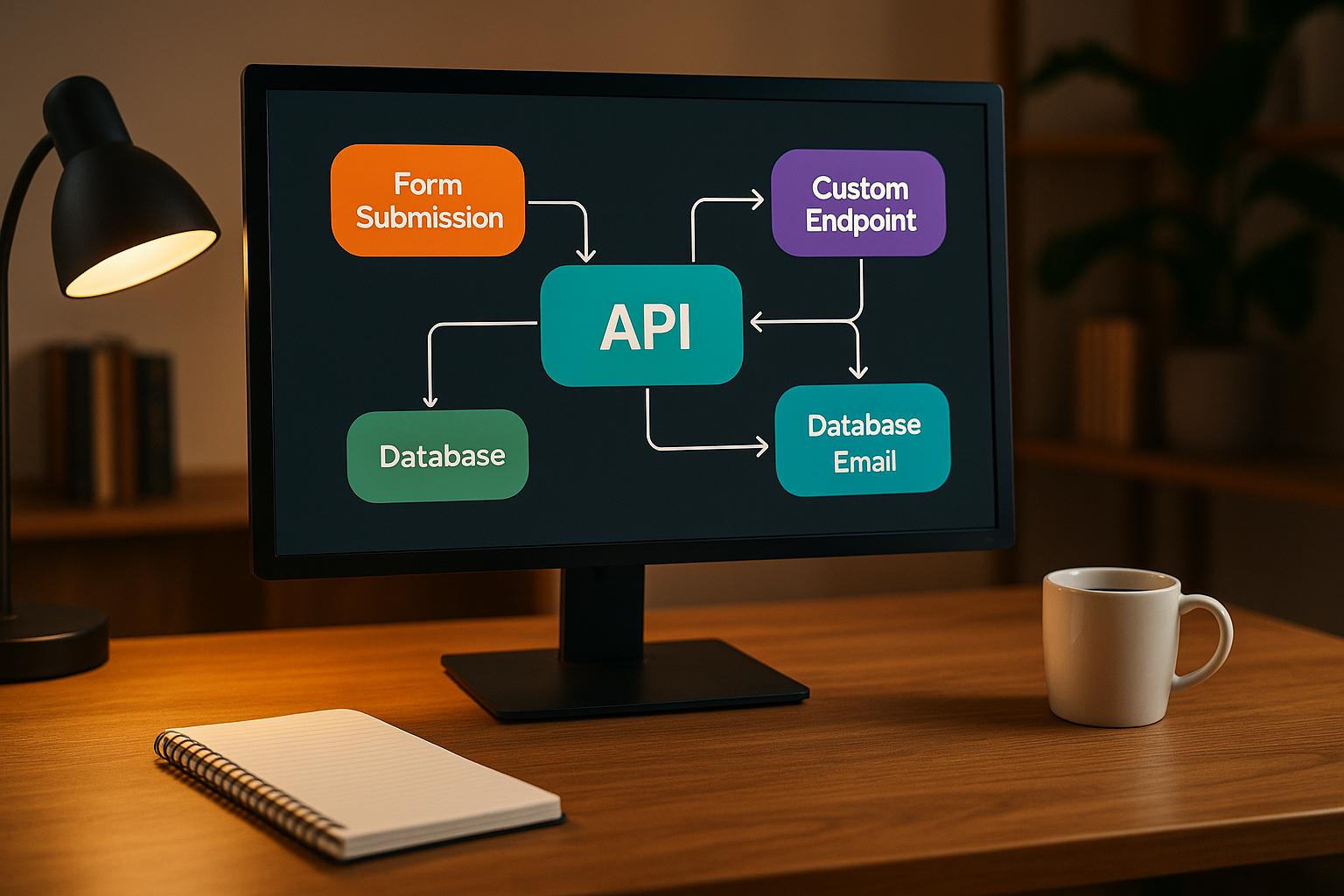Name-Based Gender Detection: Pros & Cons

Name-based gender detection uses first names to estimate gender, relying on probability models built from large global datasets. While it’s fast and useful for tasks like marketing segmentation, it faces challenges with accuracy, privacy, and inclusivity. Reform offers an alternative by collecting demographic data directly from users, ensuring better accuracy, compliance, and user-defined input.
Key Points:
- Name-based detection: Quick but prone to errors with unisex names and regional variations. May not fully respect privacy standards like GDPR.
- Reform's approach: Gathers demographic data via user input, improving accuracy and aligning with privacy regulations.
Quick Comparison:
| Criteria | Name-Based Detection | Reform's Direct Input |
|---|---|---|
| Accuracy | Varies; affected by name ambiguity | Higher; based on user-provided data |
| Privacy Compliance | May lack explicit consent | Fully compliant |
| Implementation Speed | Faster | Requires initial setup |
| Data Quality | Inferred; may include errors | Verified by users |
| Long-Term Costs | Hidden costs from misclassification | Predictable and reliable |
Choosing between these methods depends on your priorities: speed vs. accuracy and compliance. Reform’s tools prioritize direct input, ensuring reliable and user-approved data collection.
Python Name Gender Classifier Tutorial for Beginners | Machine Learning Project For Beginners
1. Name-Based Gender Detection Models
Name-based gender detection models rely on statistical analysis of extensive datasets to identify naming patterns across different regions and cultures. Instead of using continuous machine learning, these models calculate probabilities based on historical data to associate names with specific genders.
The process involves comparing first names against global databases and assigning probability scores that reflect how names are typically used in various regions. For instance, names with strong cultural associations often result in more accurate predictions. On the other hand, names that are common across genders or used in multiple contexts can make classification more challenging.
Most of these models operate within a binary framework, categorizing names as either male or female. While this aligns with traditional naming practices, it overlooks non-binary identities and the broader spectrum of gender diversity. Additionally, the perception of a name can shift depending on the region, and more advanced models take these regional differences into account to refine their predictions.
However, there are ethical concerns tied to name-based gender detection. Solely relying on these predictions risks reinforcing stereotypes and oversimplifying complex identities. Businesses using such models should view the results as just one piece of the puzzle. It’s crucial to remain mindful of how gender classification impacts customer interactions and marketing efforts. These considerations pave the way for understanding how Reform's lead enrichment tools enhance customer profiling even further.
2. Reform Lead Enrichment Features

Reform's lead enrichment tools go beyond basic data collection, adding layers of validation and refinement to customer profiles. By focusing on real-time accuracy and integration, the platform ensures businesses work with high-quality leads.
At its core, the system starts with real-time email validation, which helps maintain a reliable database by verifying leads as they come in. This foundational step ensures that only legitimate entries make it through.
Reform also uses conditional routing in its dynamic forms. These forms adapt based on factors like company size, industry, or job role, allowing businesses to gather more detailed and relevant information. This tailored approach ensures that each lead provides data that truly matters.
Once collected, the platform enriches leads by appending additional details - like company data, job titles, and industry classifications - directly into your CRM or marketing automation tools. This seamless integration with platforms like HubSpot and Salesforce eliminates the need for manual data entry and enhances lead profiles as they are generated.
To further refine the process, Reform employs multi-step forms that gather demographic details through direct user input. This method respects privacy while reducing the risk of errors or misclassification often tied to name-based predictions.
The platform's real-time analytics provide actionable insights into lead quality and conversion trends. Businesses can track which form variations drive the best results and pinpoint the most effective lead sources based on actual user behavior.
Spam prevention features also play a critical role, filtering out fake entries and bot submissions to ensure that the enriched data remains trustworthy and actionable for marketing and targeting strategies.
Finally, Reform's integration capabilities create a smooth data pipeline. Enriched lead information flows effortlessly into tools like HubSpot and Salesforce, enabling deeper analysis and better lead management at the CRM level. This streamlined process supports businesses in building more effective campaigns and improving overall lead quality.
sbb-itb-5f36581
Advantages and Disadvantages
Name-based gender detection models come with benefits like speed and automation but struggle with accuracy, especially when dealing with diverse cultural contexts and unisex names. Understanding these strengths and limitations can help organizations choose the right approach for their needs.
Speed and Automation
One of the biggest draws of name-based detection is how quickly and automatically it works. These models can process massive datasets almost instantly, making them ideal for tasks like rapid marketing segmentation without the need for manual reviews.
Accuracy Challenges
Accuracy, however, is a well-known weak spot. Name-based models often falter when faced with ambiguous cultural contexts, unisex names like "Alex" or "Jordan", or varying naming conventions across the globe. For example, the name "Andrea" can lead to frequent misclassifications depending on the culture. These limitations often push organizations to explore alternative methods for collecting gender data.
Privacy Concerns
Privacy is another critical area to consider. Since these models infer gender from names rather than relying on explicit self-identification, they may not fully comply with privacy regulations like GDPR. By contrast, directly asking users for their demographic information ensures both accuracy and adherence to privacy standards.
Reform addresses these challenges by enabling direct user input through tools like conditional routing and multi-step forms. This approach not only improves the accuracy of collected data but also respects user privacy by asking for consent directly.
Cost Considerations
While name-based detection might appear cost-effective at first glance, hidden costs from misclassifications can harm a brand's reputation. Reform’s method, which relies on verified data, offers more predictable and transparent outcomes.
| Evaluation Criteria | Name-Based Detection | Reform's Direct Input Approach |
|---|---|---|
| Accuracy | Varies with cultural context and name ambiguity | Higher due to user-supplied data |
| Privacy Compliance | May not meet explicit consent standards | Fully aligns with user consent |
| Cultural Sensitivity | Limited by biases in historical data | Recognizes individual identities |
| Implementation Speed | Near-instant results | Requires initial setup |
| Data Quality | Based on assumptions and inference | Verified directly by users |
| Long-Term Costs | Potential hidden costs from errors | Predictable and transparent outcomes |
Beyond accuracy and cost, factors like ease of integration and user experience further highlight the differences between these approaches.
Integration Complexity
Name-based detection often depends on third-party APIs, adding extra layers of dependency. In contrast, Reform’s approach integrates directly into CRM systems like HubSpot and Salesforce, ensuring a smooth flow of accurate, user-provided data.
Impact on User Experience
Misclassifications can lead to poorly targeted, gender-specific messaging that misses the mark. Reform’s conditional routing collects demographic details naturally during the user journey, improving personalization and engagement.
Scalability and Real-Time Analytics
While name-based models can handle large volumes of data, their accuracy doesn’t scale as easily, especially across diverse cultural contexts. Reform’s approach, on the other hand, evolves over time. By using real-time analytics, businesses can track which demographic questions resonate most with users and adjust forms accordingly. This feedback loop ensures continuous improvement in data quality, making Reform’s method a strong alternative to assumption-based models.
Summary
Deciding between name-based gender detection and direct user input methods often comes down to a trade-off between speed and accuracy. Name-based models can handle large datasets quickly but are prone to errors like cultural misclassification and potential privacy concerns. On the other hand, direct input methods provide more accurate and compliant data collection, offering a clear advantage in terms of reliability.
Reform addresses these challenges by prioritizing direct user input. Its tools - such as conditional routing, multi-step forms, and real-time analytics - empower organizations to gather data directly from users. This approach ensures accuracy, respects privacy, and adheres to consent-based data collection practices.
Cultural nuances are particularly important in this context. Names like "Andrea" or "Jordan" can easily lead to misclassification in name-based systems, but direct input methods eliminate these blind spots by allowing individuals to define their own information.
Unlike assumption-based gender detection, Reform's approach prioritizes long-term data quality. By integrating verified user input with leading CRMs, it enhances lead management and minimizes the risks of misclassification. These risks - ranging from damaged customer relationships to regulatory issues - can far outweigh the initial convenience of assumption-based methods.
In today’s privacy-conscious world, demographic profiling must be transparent and consent-driven. Organizations that adopt this approach will not only meet regulatory standards but also foster trust with their customers, ensuring stronger, lasting relationships.
FAQs
How do name-based gender detection tools handle names that are shared across cultures or genders?
Names like Alex or Taylor often pose challenges for gender detection tools, as these names are widely recognized as gender-neutral. Most of these tools depend on statistical models and machine learning algorithms trained on large datasets to predict gender based on name patterns. While this approach works well for many names, it struggles when faced with names that are shared across multiple genders or cultural contexts.
To address this, some advanced tools attempt to improve accuracy by incorporating extra layers of data, such as regional or cultural context, and by analyzing the structure of names. Even with these enhancements, ambiguity remains a significant hurdle - especially with names that lack clear cultural or gender associations. This underscores the need to approach the results of such tools with an awareness of their limitations.
What privacy concerns should I consider when using name-based gender detection instead of asking users directly?
Name-based gender detection comes with privacy concerns, mainly because it guesses an individual's gender without their explicit consent. This can result in misgendering or unintentionally revealing sensitive details. The method depends on assumptions about names, which often fail to account for the diversity of identities, especially across different regions and backgrounds.
On the other hand, directly asking users to disclose their gender offers a more accurate and respectful approach. It allows individuals to decide what information they want to share. That said, both strategies require careful management to protect user privacy and comply with regulations. Ensuring transparency and implementing secure data practices should remain a top priority, no matter which method is used.
How does Reform protect data accuracy and ensure privacy compliance in its lead enrichment tools?
Reform places a strong emphasis on data accuracy and privacy compliance in its lead enrichment tools. By leveraging secure API integrations and automated workflows, these tools not only simplify the data enrichment process but also allow you to maintain complete control over how your information is managed and shared.
To meet privacy law requirements, Reform follows a privacy-first strategy that prioritizes transparency and trust. This approach ensures that your data is handled responsibly, adhering to legal standards and protecting sensitive information at every step of the lead enrichment process.
Related Blog Posts
Get new content delivered straight to your inbox

The Response
Updates on the Reform platform, insights on optimizing conversion rates, and tips to craft forms that convert.
Drive real results with form optimizations
Tested across hundreds of experiments, our strategies deliver a 215% lift in qualified leads for B2B and SaaS companies.





